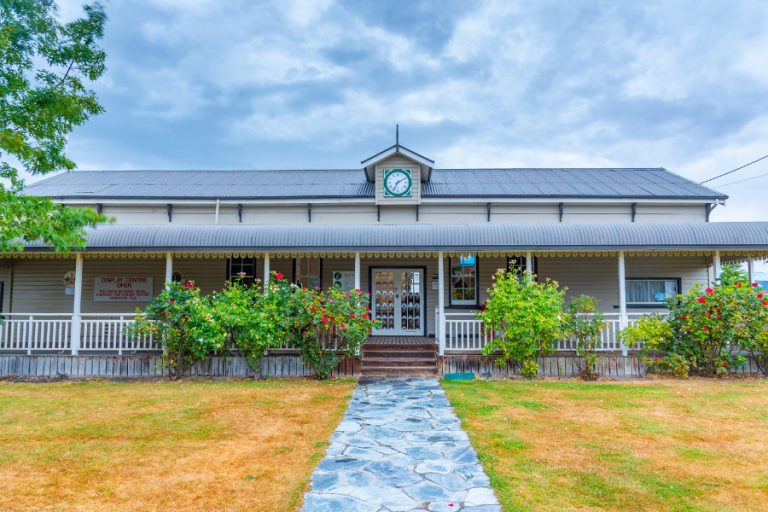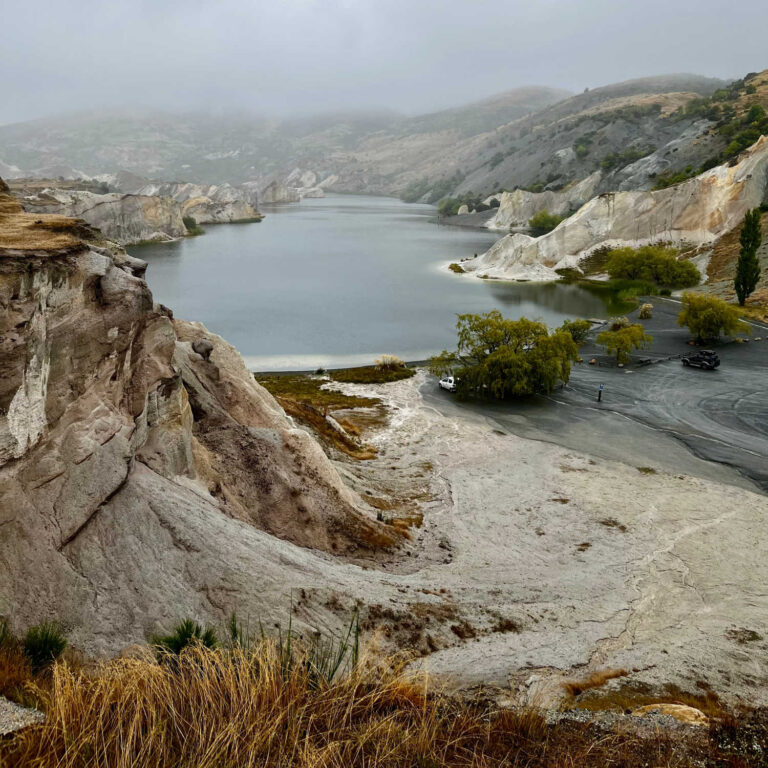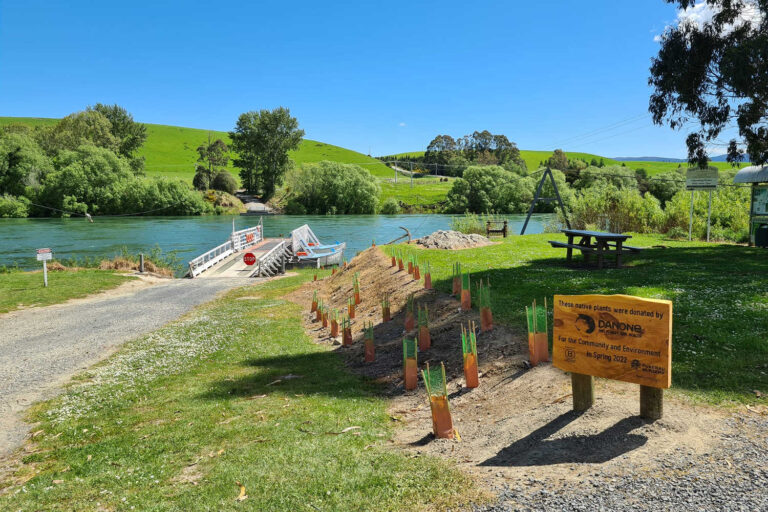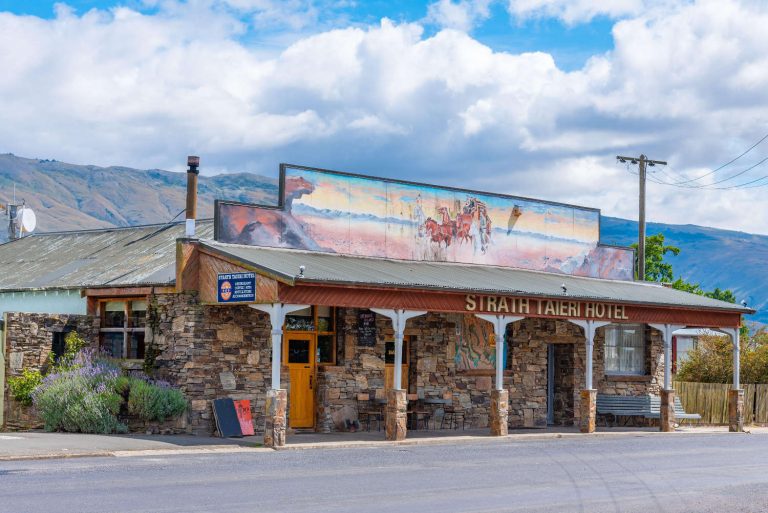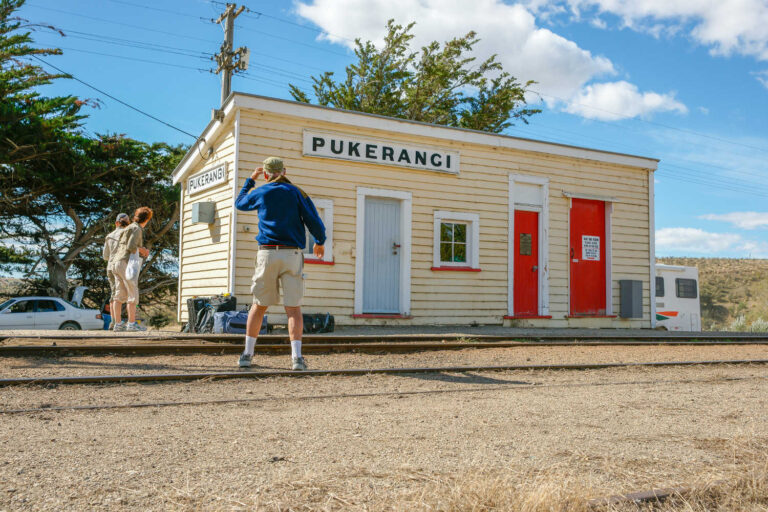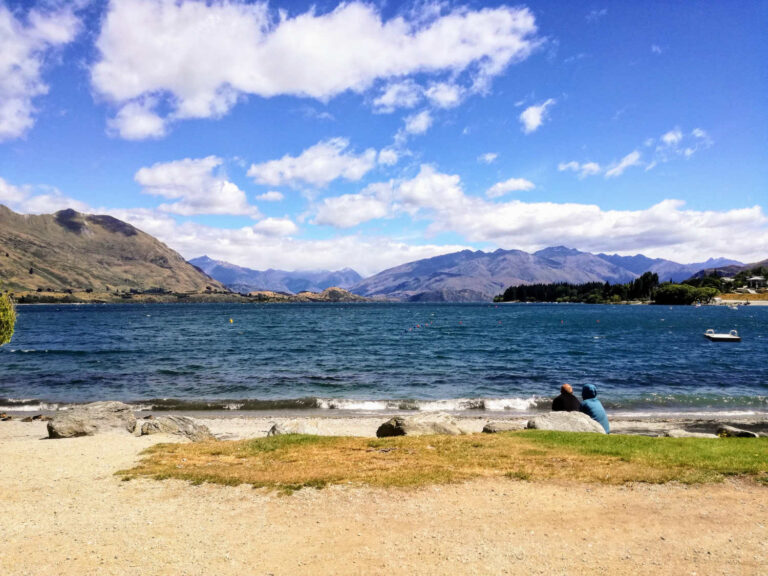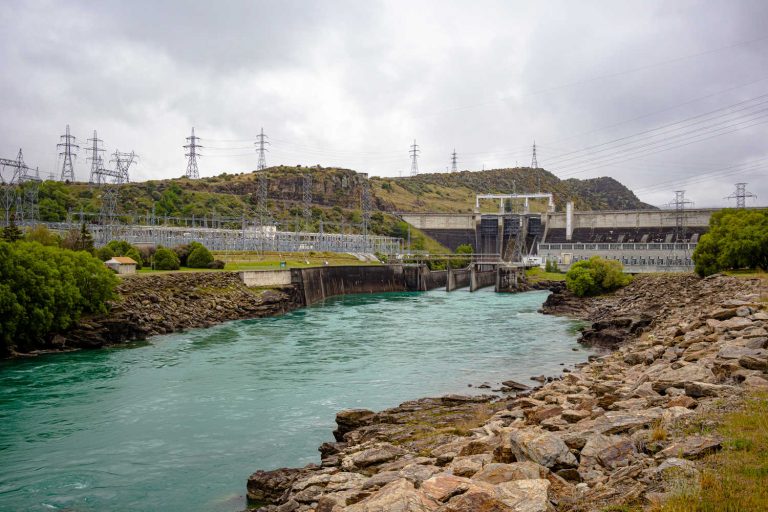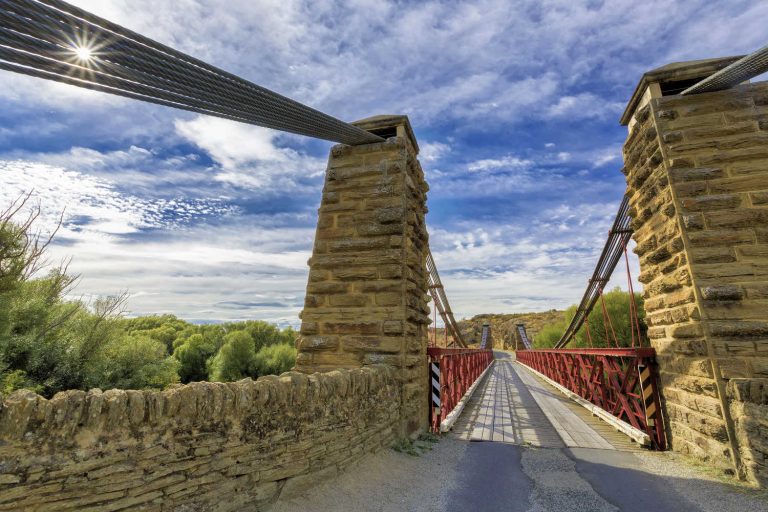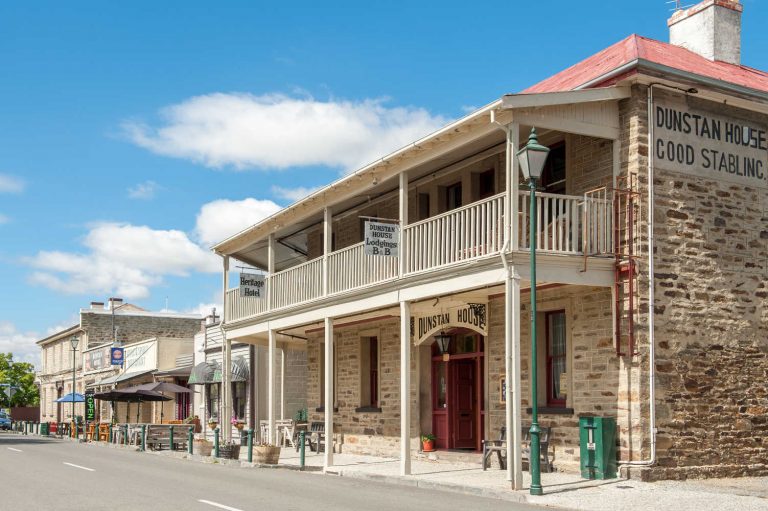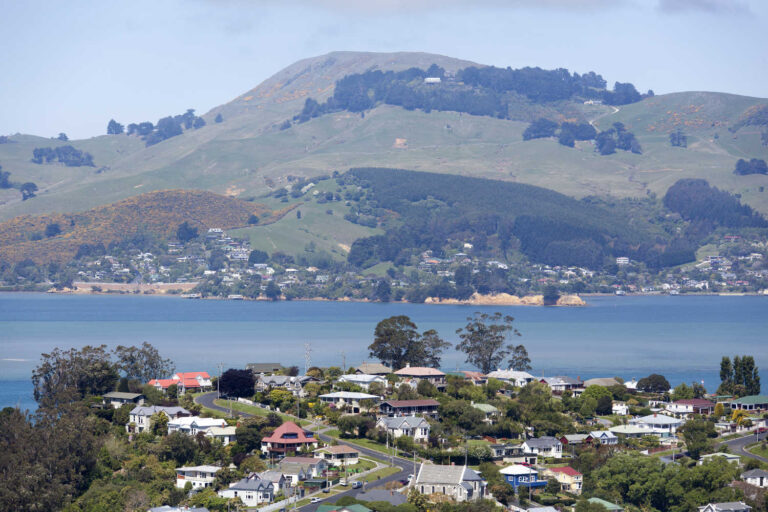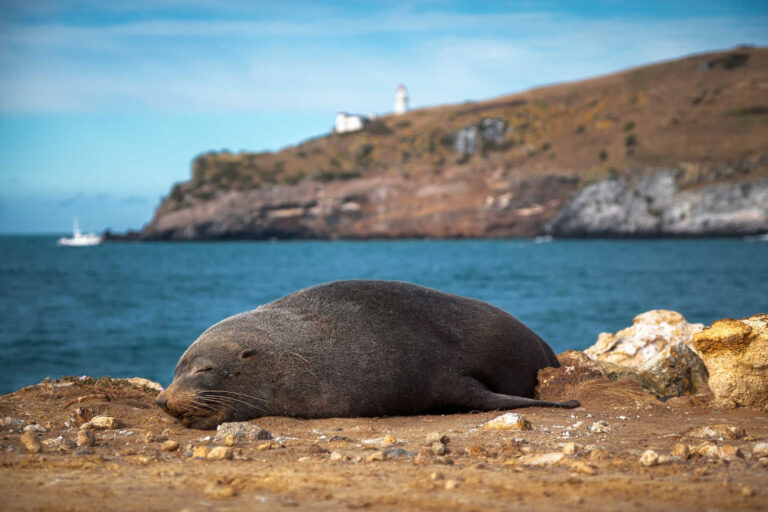Gold mining heritage settlement complete with a pub trading since the mid ninteenth century, cute colonial buildings, museum and gift shop
Naseby there are plenty of things to do. A snapshot of gold mining heritage complete with the Royal Hotel serving classic pub attracts visitors interested in the sport of curling. Proximity to Ranfurly means it is an ideal day trip for visitors exploring the area. The town, until the 1980’s was the smallest governing body in local government in New Zealand.
- Distance from Dunedin
- 151km 2 hours drive
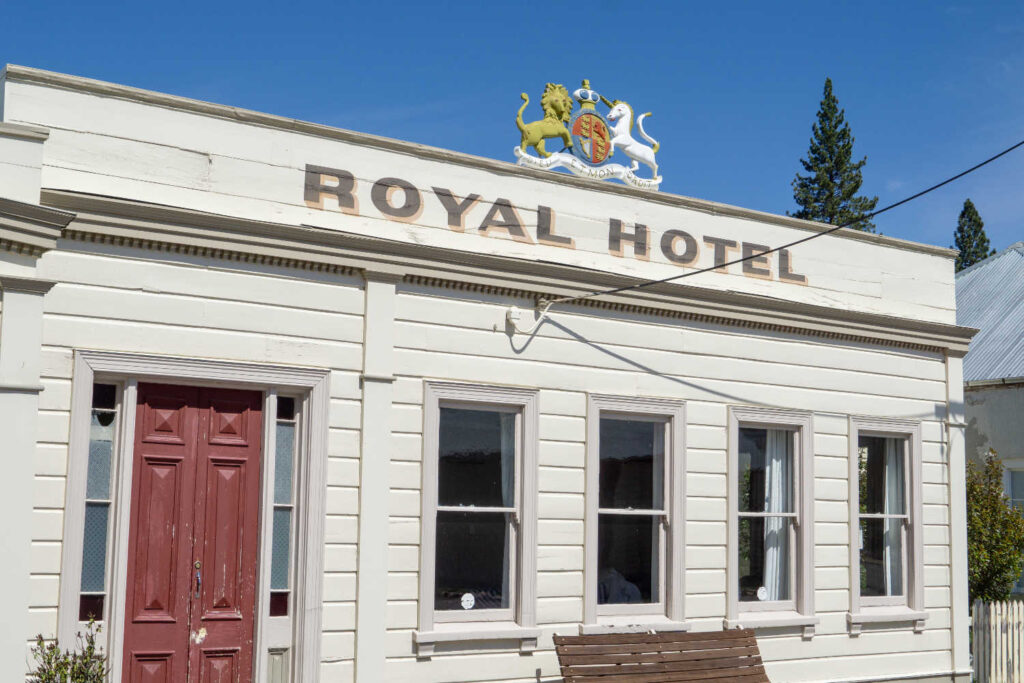
What to see in Naseby
- Mountain bike trails in Naseby Forest
- Irrigation dams are great fishing spots from Hoffmans Dam, Coalpit Dam and McAtamneys Ponds and the Taieri River
- Winter sports range from an outdoor skating rink, an ice luge where you can sledge down 800m through the forest
- Walking trails through Naseby Forest and dam areas
- Summer swimming in Hoffmans Dam is encouraged with the water race a popular local spot
- Photographers are spoilt with vistas, water and light contrasting with the colonial Naseby architecture
Naseby’s fame
- One Chinese miner at the Kyeburn Diggings at this time was Sew Hoy, who went on to develop a business empire in New Zealand. He was innovative and developed a prototype shallow draft bucket dredge, adopted around the world, and operated gold dredges until 1943.
Naseby’s notoriety
- Apart from Māori, Chinese were the only ethnic group victimised by deliberate acts of violence. In the goldfields town of Naseby in 1868 Ah Pack was stripped of his clothes, put into a barrel and rolled about town.
- In 1928, Joe Leong Shum (also spelt Shen in some articles), a 48-50 year old Chinese man was murdered on the Kyeburn Diggings. William John Hardie had arrived at the house and was given a cup of tea.
Where to take the best selfie in Naseby
- Backdrop against the Watchmakers building dark green colour exterior
- Yourself learning to curl and yell encouragement simultaneously
- Kyeburn diggings in spring with naturalised flowers and a historic cemetery as a backdrop (20 minutes via Danseys Pass Rd). 4WD vehicle recommended, especially in winter, stopping off at the Danseys Pass Hotel, is a perfect place for lunch and another photo stop
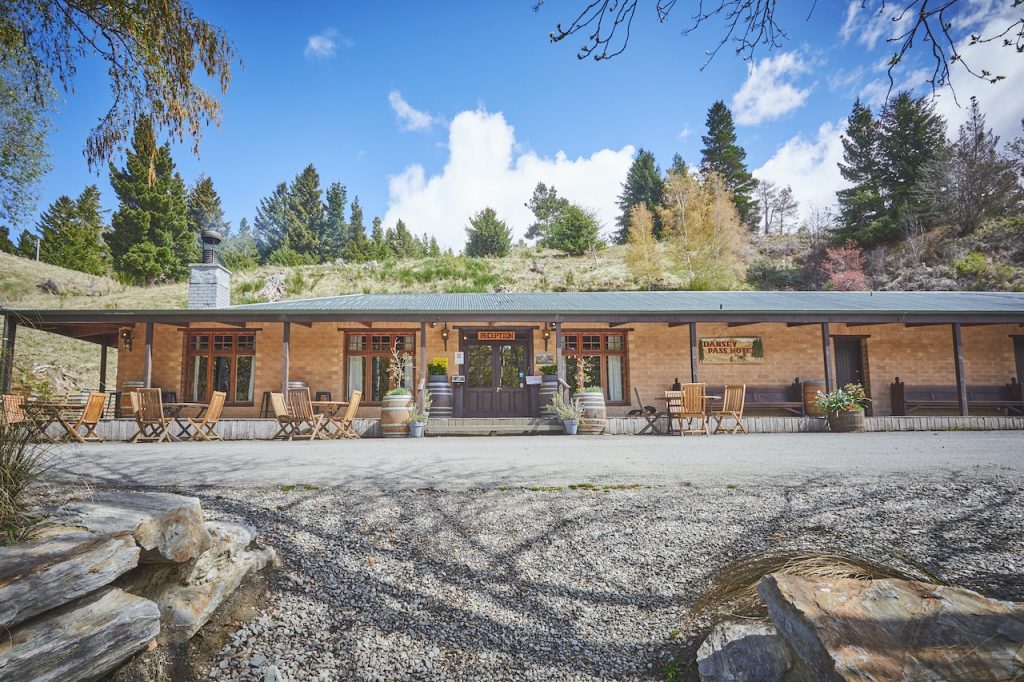
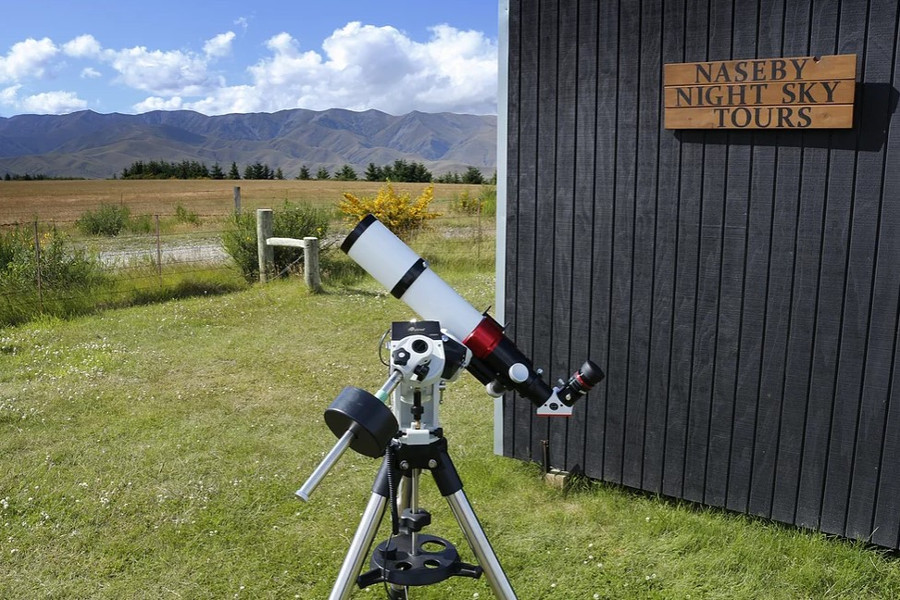
Naseby for kids
- Curling is for all age groups
- New Zealand Night Sky Tours where the stars become places. The day time sun observation tour explores the orb of light and fire that is a constant in our sky. Witness the power of the Sun up close through a specially designed solar telescope.
Who turned up and settled in Naseby?
A red tinted tussock landscape (Maniototo) witnessed the gold rush (1863) in an area known as Hogburn Gully and Parkers Diggings with canvas tents offering rudimentary shelter for the prospectors. Within nine years a permanent settlement stood in place of tents. The new settlement was named Naseby after the Otago Superintendent, John Harris’s birthplace. There were 25 hotels and a tiny corrugated Athenaeum church which began its life as the Union Church in 1865. In its heyday Naseby had over 5,000 residents. Today Naseby, with its dedicated curling rink is a tourist destination and sports fan mecca for curling.
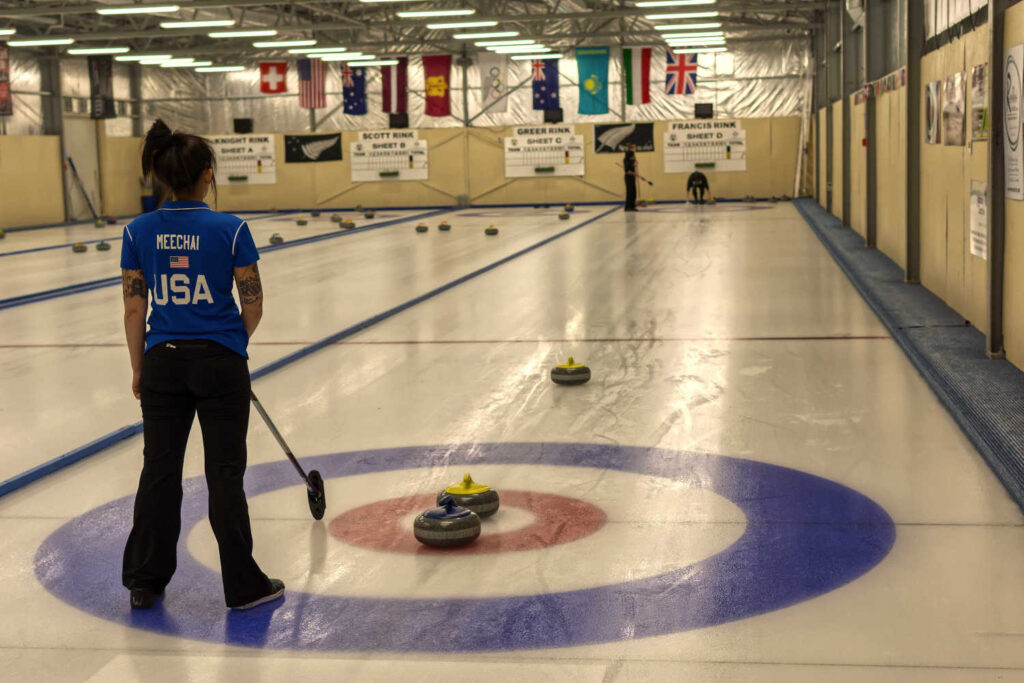
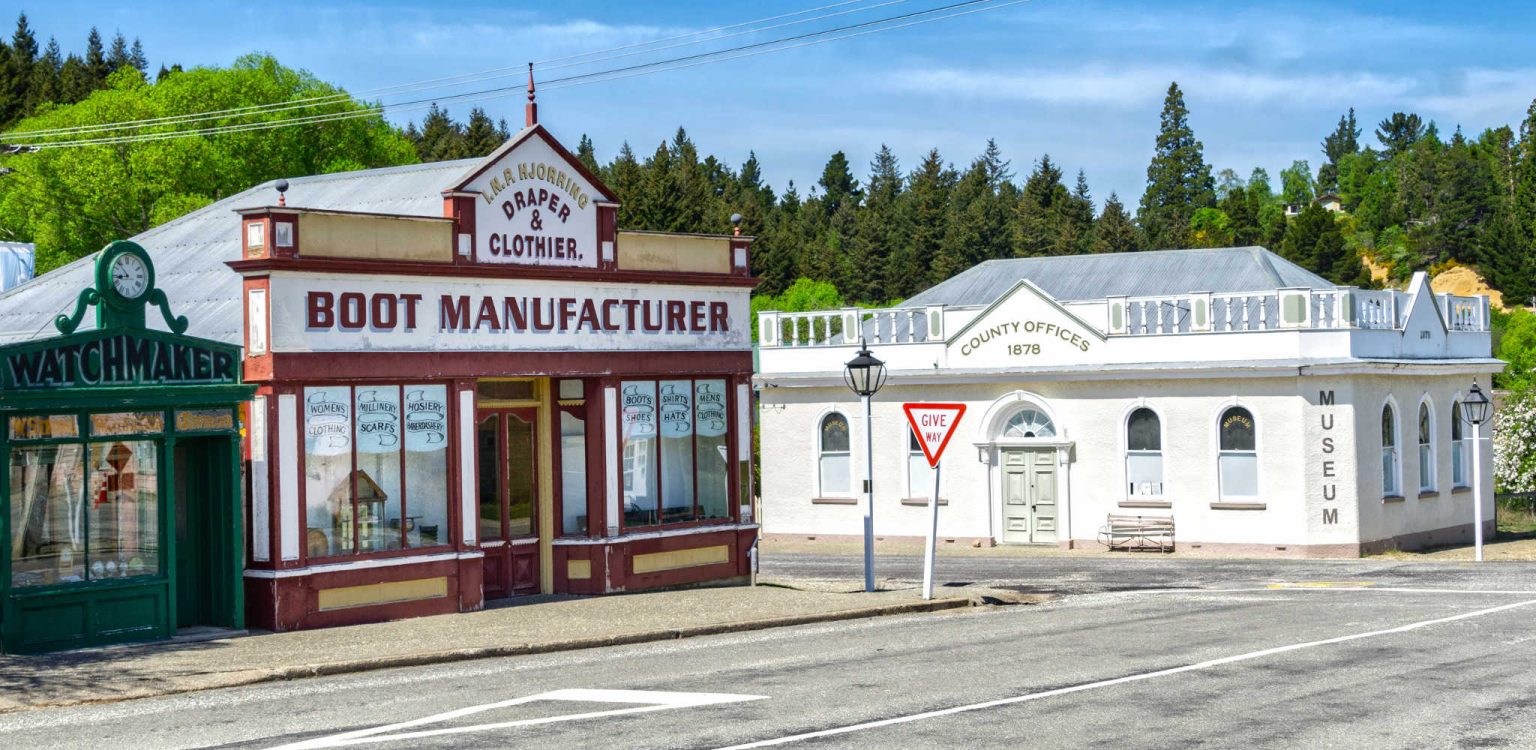
What makes Naseby tick?
- Tourism
- Curling tournaments
Naseby’s Social Media
Climate in Naseby
Best time to go to Naseby
Year round.
- Glorious winter landscape, pop on merino wool, layers and enjoy the hoar frost.
- Spring to Autumn hot dry summer days with a blaze of colour in autumn
Naseby’s population
- Approximately 120
Judgment on Naseby
- The place is worth a visit especially for visitors interested in culture & heritage. For sports fans there is an opportunity to try your hand at curling.
Every town adds to the richness of things to do and see. For more details about the region check Dunedin & Otago Region nearby attractions and events.
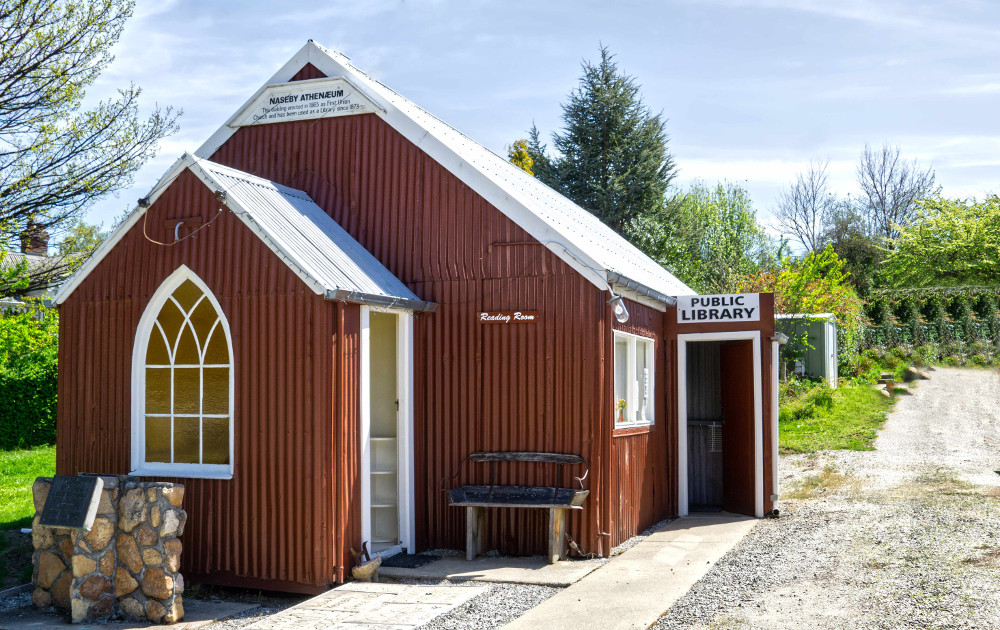
Getting to Naseby
TRAVEL PACK INFORMATION
Curling is one of the oldest sports played in New Zealand introduced in 1880’s. The Scottish game was originally played on natural ponds and miners dams. The Maniototo Curling International rink at Naseby, opened 2005 is the soley Olympic size curling rink in the southern hemisphere. It’s the home of the New Zealand Olympic Curling Team. The rink is open year round.
Naseby Naseby Trails – From 1899 pine forests were planted to the west of the town. “Wilding” pines from the forest eventually spread over the goldfield tailings and then through the town – and now the forest trails make a popular playground for walkers and one of the best mountain bike terrains in New Zealand.
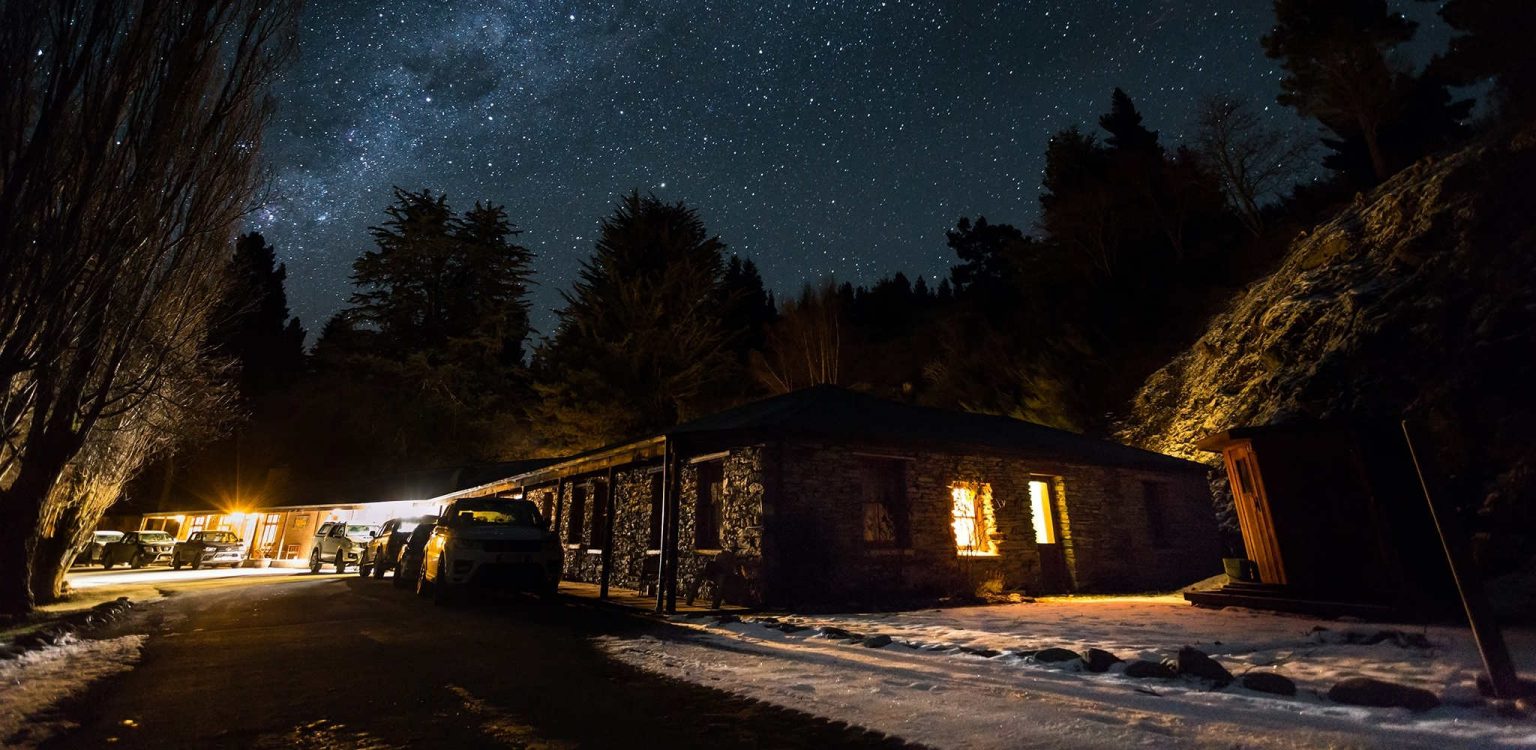
DANSEYS PASS HOTEL
Offers classic pub meals, accommodation and a public bar packed with artefacts, curios and photographs. The stonework was constructed by mason, ‘Happy Bill’ who received payment for every schist boulder he shaped and laid. Payment one pint of beer. In its day Danseys Pass was home to over 2,000 residents. At an altitude of 935m the landscape is alpine. Early miners planted redwoods and pines now part of German Creek Reserve, thick with mature specimens reminding visitors of forgotten miners. The reserve is behind the hotel. Danseys Pass conservation campsite: Naseby area, Otago region. Danseys Pass was a traditional Maori trading route connecting the Maniototo to the Waitaki Valley and the West Coast. Local Maori guided North Otago runholder, William Dansey access to the Maniototo tussock. A journey over the pass is a challenging 50km journey, on a narrow and twisting gravel road suitable for 4WD vehicles.
KYEBURN DIGGINGS
Kyeburn Diggings was the northernmost town of the Maniototo now the only visible signs are the cemetery and the sole surviving building the Danseys Pass Coaching Inn. Now the area supports high country sheep farming. Kyeburn had hotels, a school, post office and shops.
The diggings continued into the 20th century. The local Naseby paper, Mount Ida Chronicle, only reported occasionally on the area. In part this is due to attitudes to the miners ethnicity as one quarter of mining applications were by Chinese miners, in the 1870’s to 1880’s. Chinese miners operated largely as a parallel community to the European miners working in neighbouring claims. On mining applications in 1876 a well known businessman his name appears on the form.
1876- Ah King (with Corn Jack), Ah Toe (with A. Cook), Ah Sai, Ah Cheong, Duck Fuaye, Yang Wie, Ah Hoe, Sew Ku, Kum Yoke, Sew Hoy, Yet Yetze, Ti Am, Ah Chang, Ah Kew, Ah Chang, Ah Sewie, Ah Wan. Note: the spelling is a rough English translation of the Cantonese dialect spoken by the miners. As Chinese place their surnames first when asked, it effectively meant the original Cantonese version of the miner’s surname was not translated correctly, if at all. The life and times of Charles Sew Hoy Wikipedia
Racial prejudice towards Chinese Miners
In 1928, Chinese miner Joe Leong Shum was murdered on the Kyeburn Diggings. Eventually convicted was William John Hardie who had arrived at the miner’s house and was given a cup of tea. Hardie was found guilty of manslaughter. Local Otago papers briefly mentioned the murder and arrest, but gave no more details. A large part of the community turned up for the funeral of Joe, however it appears the Europeans were treating it as a social event, and had to be told to stop talking through the service.
Original report of murder
“THE KYEBURN MURDER” OTAGO DAILY TIMES, ISSUE 20555, 2 NOV 1928, PAGE 3
Anti-Chinese acts — New Zealand legislation
- In 1881 a £10 poll tax was placed on each Chinese immigrant, and their numbers were restricted to one person for every 10 tons of ship’s cargo. These figures were raised in 1896 to £100 poll tax and 200 tons of cargo.
- In 1892 naturalisation as New Zealand citizens became free for all except Chinese. The naturalisation of Chinese was abolished in 1908 and did not resume until 1952.
- In 1907 a reading test in English was imposed for Chinese immigrants.
Cemetery
About 129 burials are known to have occurred at Kyeburn Diggings Cemetery, but only 73 records remain. A fire in 1912 destroyed the cemetery record book. Remaining copies of the records are held in Maniototo Early Settlers Museum at Naseby and at the Ranfurly Service Centre. The cemetery official burials are largely European as Chinese were either buried in unmarked graves at the edges or for wealthier miners their bodies were shipped back to China for burial in ancestral plots.
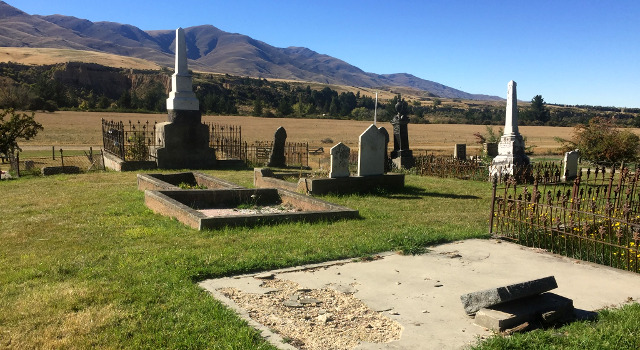
BEST BITS TRAVEL GUIDE


